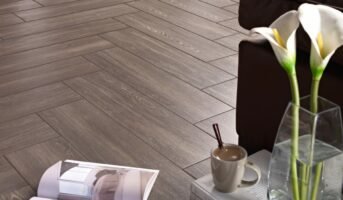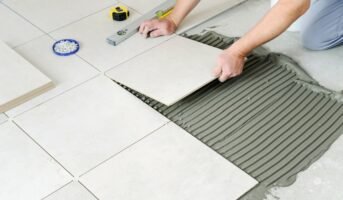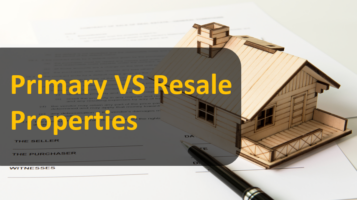Fibre cement boards are a key component in the construction industry in India, providing resilient building solutions for various applications. These composite materials, composed of sand, cement and cellulose fibres, are known for their durability and versatility. Whether used independently or in conjunction with plywood, fibre cement boards offer a reliable option for long-lasting furniture and homes.
See also: What is RCC in construction?
What are fibre cement boards?
Fibre cement boards are composite materials made of sand, cement and cellulose fibres. These boards offer exceptional strength, durability and resistance to fire, water and termites. They have gained popularity in the construction industry for their versatility and ability to withstand extreme conditions.
Composed of Portland cement with a glass-fibre mesh on the surface, fibre cement boards provide a robust and reliable option for a variety of construction applications. From flooring and furniture to wall cladding/panelling and gates, these boards offer endless possibilities to architects and builders. The composite nature of fibre cement boards makes them highly resilient and long-lasting, ensuring the longevity of any structure they are used in.
Key properties of fibre cement boards
| Property | Description |
| Strength | Fibre cement boards exhibit impressive strength, allowing them to bear heavy loads without cracking or warping. |
| Durability | These boards are highly durable, resisting damage from moisture, termites and other pests. They are also immune to rot and decay, making them ideal for long-lasting construction projects. |
| Fire resistance | Fibre cement boards are non-combustible and fire-resistant, providing crucial protection in case of a fire outbreak. |
| Water resistance | These boards repel water effectively, preventing damage caused by moisture and ensuring structural integrity. |
| Thermal insulation | Fibre cement boards offer moderate thermal insulation, improving energy efficiency and temperature regulation in buildings. |
Advantages
Fibre cement boards offer several advantages in construction. They are highly resistant to fire, water and termites, providing long-lasting and durable building solutions. Unlike plywood, they do not degenerate or disintegrate in the rain due to moisture and do not attract termites. Additionally, they are thermal resistant and do not catch fire easily, making them suitable for use in kitchens. Fibre cement boards also have low maintenance requirements and can be painted and textured to fit the design of any space.
- High resistance to fire, water and termites.
- Durable and long-lasting.
- Do not degenerate or disintegrate in the rain.
- Do not attract termites.
- Thermal resistant and suitable for use in kitchens.
- Low maintenance requirements.
- Can be painted and textured to fit any design.
History and evolution of fibre cement boards
Fibre cement boards have a fascinating history that dates back to their invention in Austria, in 1901 by Ludwig Hatschek. Initially, these boards were reinforced with asbestos fibres to enhance their strength and durability. However, in the 1970s, the discovery of the harmful effects of asbestos on human health led to the development of safer alternatives. As a result, fibre cement boards underwent a significant evolution.
Today, fibre cement boards are one of the last materials to contain asbestos, with progressive efforts to eliminate asbestos from their composition to ensure the safety of both builders and homeowners. These boards have become widely used in the construction industry due to their outstanding durability and performance.
The evolution of fibre cement boards from their early days to the present has paved the way for safer construction practices while still maintaining the resilience and versatility that they are known for. The shift from asbestos fibres to alternatives like cellulose fibres has not compromised the strength and functionality of these boards, making them a trusted choice for builders across the globe.
Installation of fibre cement boards
When installing fibre cement boards, it is important to follow the proper procedure to ensure a secure and long-lasting installation. Here are the key steps involved:
- Prepare the surface: Before installation, ensure that the surface is clean, flat and dry. Any bumps or irregularities should be smoothed out to ensure a seamless finish.
- Measure and cut the boards: Measure the area where the fibre cement boards will be installed and cut them to the required size using appropriate tools.
- Position the boards: Start by positioning the first board at the desired location, leaving a slight gap between the boards to allow for thermal expansion. Use corrosion resistant screws to secure the boards to the surface.
- Fill the gaps: After the boards are installed, fill the gaps between them with a high-quality silicone sealant. This will provide a watertight seal and prevent moisture penetration.
- Tape the sealed gaps: To further enhance the water resistance of the installation, tape the sealed gaps with fibreglass tapes. This will reinforce the sealed gaps and ensure stability and durability.
- Inspect and finish: Once the installation is complete, inspect the boards to ensure they are securely fastened and there are no visible gaps or imperfections. Apply any desired finishing touches, such as paint or texture, to achieve the desired aesthetic.
Uses of fibre cement boards
Fibre cement boards are highly versatile and find extensive use in various construction applications. Their durable and indestructible properties make them ideal for a range of uses including flooring, furniture, wall cladding/panelling and gates.
One of the significant advantages of fibre cement boards is their ability to withstand high traffic and heavy loads, making them suitable for flooring in commercial spaces and residential areas alike. Their resilience ensures long-lasting performance and minimal maintenance requirements, making them a cost-effective choice.
In the realm of furniture, fibre cement boards offer a unique opportunity to create stylish and durable pieces. From tables and chairs to shelves and cabinets, these boards can be seamlessly integrated into various furniture designs, adding a contemporary touch to any space.
When it comes to wall cladding and panelling, fibre cement boards provide both aesthetic appeal and functional benefits. They can be easily installed to create striking feature walls, adding texture and visual interest to interiors and exteriors alike. The boards can also be painted and textured to match any design aesthetic, making them highly adaptable to different styles and preferences.
Fibre cement boards are also commonly used for gates, thanks to their sturdy composition and resistance to external elements. Whether for residential or commercial properties, these boards can be relied upon to provide security, durability and visual appeal.
Additionally, the thermal resistance of fibre cement boards makes them a suitable choice for kitchens. They do not catch fire easily, ensuring safety in cooking spaces.
It is worth highlighting that fibre cement boards are asbestos-free, making them a safer option for both builders and homeowners. Their composition eliminates the health risks associated with asbestos exposure, providing peace of mind during installations and usage.
FAQs
What are fibre cement boards?
Fibre cement boards are composite materials made of sand, cement and cellulose fibres. They are highly resistant to fire, water and termites, making them an ideal choice for building long-lasting furniture and homes.
What are the advantages of fibre cement boards?
Fibre cement boards offer several advantages in construction. They are highly resistant to fire, water and termites, providing long-lasting and durable building solutions. Unlike plywood, they do not degenerate or disintegrate in the rain due to moisture and do not attract termites. Additionally, they are thermal resistant and do not catch fire easily, making them suitable for use in kitchens.
What is the history and evolution of fibre cement boards?
Fibre cement boards were first patented in Austria in 1901 by Ludwig Hatschek. Initially, they were made with asbestos fibres for added strength. However, in the 1970s, it was discovered that asbestos is harmful to health, leading to the development of safer alternatives, such as cellulose fibres. Fibre cement boards were one of the last materials to contain asbestos, but the progressive elimination of asbestos from the products has ensured their safety.
How are fibre cement boards installed?
Fibre cement boards are installed using corrosion resistant screws. They have minimal movement under thermal stress, but a slight gap is left between the boards, which is filled with a silicone sealant. The sealed gaps are then taped with fibreglass tapes to make the boards water resistant.
Are fibre cement boards water resistant?
Fibre cement boards derive their water resistance from a treated gypsum core and an organic reinforced fibre covering. Boards made with Portland cement are truly waterproof and can be submerged in water without any risk of degradation. They do not even require sealing of edges and penetrations to maintain their structural integrity.
What are the uses of fibre cement boards?
Fibre cement boards have a wide range of applications in construction. They are ideally used for flooring, making furniture, wall cladding/panelling and even gates due to their indestructible properties. They can be used in kitchens as they are thermal resistant and do not catch fire easily.
Why are fibre cement boards a popular choice for construction in India?
Fibre cement boards have revolutionised the construction industry with their versatility and durability. They offer numerous advantages over other materials, including their resistance to fire, water and termites. Fibre cement boards are a popular choice for construction in India due to their ability to provide resilient and stylish building solutions.
| Got any questions or point of view on our article? We would love to hear from you. Write to our Editor-in-Chief Jhumur Ghosh at [email protected] |

Khushi Jha, a graduate in history and political science from the University of Delhi, doesn’t restrict herself to a single domain. Her passion for writing has led her to explore a wide spectrum of topics, ranging from fashion, health and lifestyle to technology, real estate and finance. She has written for platforms like TheVoiceOfWoman, Techsunk, Fitmist and Menskool, among others. When free, she enjoys reading books, including fiction, history and geopolitics.











